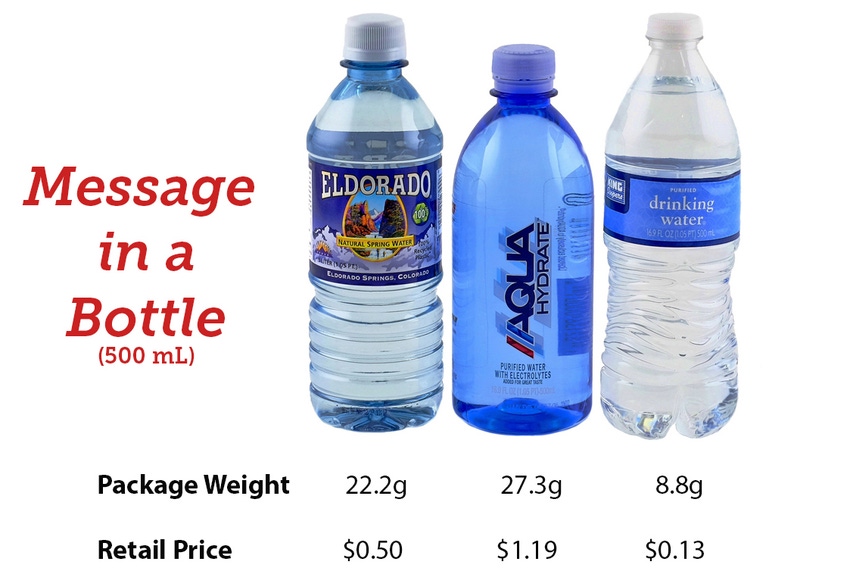Message packaged in a bottle
July 17, 2015

Do judge a PET bottle sustainably by its weight, but not in the way you may assume, advises Eco-Insights blogger Robert Lilienfeld.
Behold three 500-milliliter bottles of water. On the left is a local semi-premium brand; on the right is a national private label product; and in the middle is an ultra-premium product. All were bought at a Denver-area King Soopers (Kroger) store.
Notice that the weight of the bottles is directly related to the perceived value of the water inside. Ditto for the price.
This is marketing at its most basic, and many would argue, at its best: Match the shape, feel and weight of the bottle to the consumer perception you are trying to build. Price accordingly.
But it’s also sustainable thinking at its worst because the strategy decouples environmental benefits from perceived product benefits. It also sends mixed signals about the importance of both source reduction and recycling.
Here’s the rub: The private label bottle, weighing in at only 8.8g, uses significantly less material and therefore generates the least amount of resource consumption, solid waste and greenhouse gas emissions. The one in the middle, at 27.3g, generates about three times the resource consumption and waste, but also delivers almost 10 times the retail price, making it much more profitable for the brand owner and retailer.
The same situation exists post-use. To the average recycler, the middle bottle puts more easy-to-handle PET into the waste stream, thus increasing yield, recycling rates and economic benefits.
Ironically, we have created a system that rewards all participants for doing less for the environment and more for their wallets.
The solution to this situation requires a major paradigm shift in our collective thinking.
If our objective is to reduce overall environmental impact, we should be minimizing discards rather than maximizing recycling rates.
I know that what I have just stated will not sit well with the recycling community, certain non-governmental organizations (NGOs) and a number of legislators. I understand your pain, as your livelihoods are focused on a very specific part of the packaging chain.
But who will speak for the big picture, and when will they start to do it? A truly sustainable world depends on finding the answer—and doing so quickly.
What do you think? Please comment below.
Missed one of Bob's blogs? Read them here.
Robert (Bob) Lilienfeld has been involved with sustainable packaging for more than 20 years. He is currently editor of The ULS (Use Less Stuff) Report, a marketing and communications consultant to AMERIPEN and other organizations, and is a professional photographer.
About the Author(s)
You May Also Like




